 |
Foodoric and associated companies are chemicals manufacturing companies operated in India USA UAE Europe Asia and other countries around the world. The associates have one or more of certifications like ISO-9001, ISO-14001, ISO-22000:2005, FSSC 22000; OHSAS 18001; Kosher and Halal Certified; HACCP, FSSAI and FDA - GMP approval. Buyers are assured of good quality and CIF wholesale and retail price for supplies of our Potassium Nitrate. |
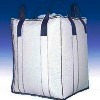
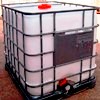
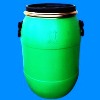
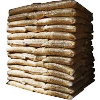
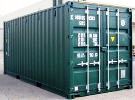
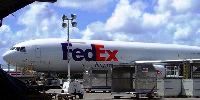
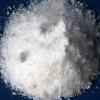
Potassium Nitrate Commercial Pure BP USP ACS Reagent FCC Food Grade Manufacturers Suppliers
Potassium Nitrate
Commercial Pure BP USP ACS Reagent FCC Food Grade

Potassium Nitrate CAS Number: 7757-79-1, Molecular Formula: KNO3, Molecular Weight: 101.1
Potassium Nitrate FCC Food Grade Specifications
KNO3 Formula wt 101.10
INS: 252 CAS: [7757-79-1]
DESCRIPTION
Potassium Nitrate occurs as colorless, transparent prisms, as white granules, or as a white, crystalline powder. It is slightly hygroscopic in moist air. One gram dissolves in 3 mL of water at 25°, in 0.5 mL of boiling water, and in about 620 mL of alcohol. Its solutions are neutral to litmus.
REQUIREMENTS
Identification: A 1:10 aqueous solution gives positive tests for Potassium and Nitrate.
Assay: Not less than 99.0% and not more than 100.5% of KNO3 after drying.
Chlorate: Sprinkle about 100 mg of dry sample on 1 mL of sulfuric acid. The mixture does not turn yellow.
Lead: Not more than 4 mg/kg.
Loss on Drying: Not more than 1%.
Potassium Nitrate BP Ph Eur Grade
KNO3 -- 101.1 -- CAS 7757-79-1
DEFINITION
Potassium nitrate contains not less than 99.0 per cent and not more than the equivalent of 101.0 per cent of KNO3, calculated with reference to the dried substance.
CHARACTERS
A white, crystalline powder or colourless crystals, freely soluble in water, very soluble in boiling water, practically insoluble in alcohol.
IDENTIFICATION
A. It gives the reaction of nitrates.
B. Solution S (see Tests) gives the reactions of potassium.
TESTS
Solution S:
Dissolve 10.0 g in carbon dioxide-free water prepared from distilled water and dilute to 100 ml with the same solvent.
Appearance of solution:
Solution S is clear and colourless.
Acidity or alkalinity:
To 10 ml of solution S add 0.05 ml of bromothymol blue solution. Not more than 0.5 ml of 0.01 M hydrochloric acid or 0.01 M sodium hydroxide is required to change the colour of the indicator.
Reducible substances:
To 10 ml of solution S, add 0.5 ml of dilute sulphuric acid and 2 ml of zinc iodide and starch solution. The solution does not become blue within 2 min.
Chlorides:
If intended for ophthalmic use, it complies with the test for chlorides. Dissolve 2.5 g in water and dilute to 15 ml with the same solvent. The solution complies with the limit test for chlorides (20 ppm).
Sulphates:
Dilute 10 ml of solution S to 15 ml with distilled water. The solution complies with the limit test for sulphates (150 ppm).
Ammonium:
1 ml of solution S complies with the limit test (A) for ammonium (100 ppm). If intended for ophthalmic use, not more than 50 ppm of ammonium.
Calcium:
Dilute 10 ml of solution S to 15 ml with distilled water. The solution complies with the limit test for calcium (100 ppm). If intended for ophthalmic use, not more than 50 ppm of calcium.
Iron
Dilute 5 ml of solution S to 10 ml with water. The solution complies with the limit test for iron (20 ppm). If intended for ophthalmic use, not more than 10 ppm of iron.
Sodium:
Not more than 0.1 per cent of Na, determined by atomic emission spectrometry.
Heavy metals:
12 ml of solution S complies with limit test A for heavy metals (10 ppm).
Loss on drying:
Not more than 0.5 per cent determined on 1.000 g by drying in an oven at 100°C to 105°C.
Potassium Nitrate USP
KNO3 101.10 --- [CAS 7757-79-1].
Potassium Nitrate contains not less than 99.0 percent and not more than 100.5 percent of KNO3.
Identification: A solution of it responds to the tests for Potassium and for Nitrate.
Chloride: A 500-mg portion of it shows no more chloride than corresponds to 0.21 mL of 0.020 N hydrochloric acid (0.03%).
Sulfate: Dissolve 100 mg of Potassium Nitrate in 10 mL of water, add 15 mL of 6 N hydrochloric acid, and evaporate to dryness on a steam bath. To the residue so obtained add 7 mL of 6 N hydrochloric acid, and evaporate to dryness on a steam bath. Dissolve the residue so obtained in about 35 mL of water and, if necessary, neutralize with hydrochloric acid using litmus paper indicator. Filter, if necessary, to obtain a clear test solution. This test solution shows no more sulfate than corresponds to 0.10 mL of 0.020 N sulfuric acid (0.1%).
Arsenic: 3 ppm.
Lead: A solution of 0.5 g of it in 20 mL of water contains not more than 5 4g of lead (corresponding to not more than 0.001% of Pb).
Heavy metals: 0.002%.
Iron: not more than 0.001%.
Limit of sodium: the limit is 0.1%.
Limit of nitrite: To pass the test.
Potassium Nitrate ACS Analytical Reagent
KNO3
Formula Wt 101.10
CAS Number 7757-79-1
REQUIREMENTS
Assay: 99.0% KNO3
pH of a 5% solution: 4.5-8.5 at 25C
MAXIMUM ALLOWABLE
Insoluble matter: 0.005%
Chloride (Cl): 0.002%
Iodate (IO3): 5 ppm
Nitrite (NO2): 0.001%
Phosphate (PO4): 5 ppm
Sulfate (SO4): 0.003%
Heavy metals (as Pb): 5 ppm
Iron (Fe): 3 ppm
Calcium (Ca): 0.005%
Magnesium (Mg): 0.002%
Sodium (Na): 0.005%

Potassium Nitrate Manufacturers Suppliers:
Foodoric Group of Cos
India, USA, UAE, Europe
e-mail: info@foodoric.com

Copyright
Last
14 March, 2022
Potassium Nitrate Suppliers, Exporters, Importers, Manufacturers offering good CIF wholesale and retail prices, quality and online information.
A jackal woke up early in the morning and went in to the plains. He looked at his long shadow in the rising morning sun and said to himself, "I must have a camel for my meal today".
He kept moving around till noon and it was getting hot and the jackal was tired. He was also hungry and thirsty. He looked at his small shadow in the mid-day sun. He murmered, "I was only joking about the camel, a mouse will do".